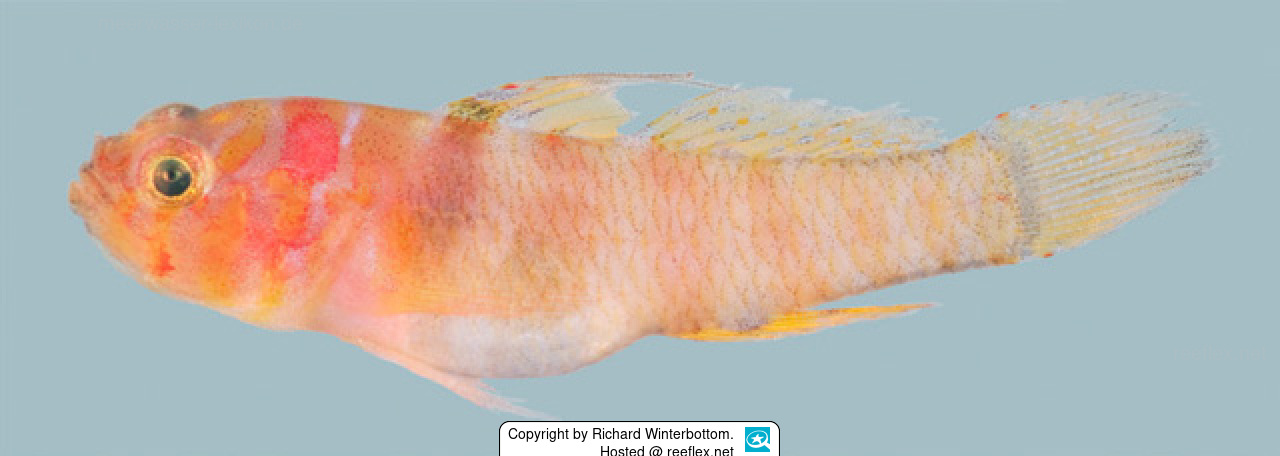Info
Unfortunately, no photos of living animals of the dwarf goby Sueviota aprica are available, the first description was made in 1988 by Drs. Winterbottom & Hoese.
The species was collected in well-developed caves on steep slopes of reefs and possibly seems to be restricted to this habitat.
Sueviota aprica is also not included in the IUCN Red List of Threatened Species, so it remains to be seen whether this goby species still exists.
Etymology:
The species name “aprica” comes from the Latin word “apricus”, which means “sunny”, alluding to the eye-shaped, brick-red, round spot on the back of the head,
which is reminiscent of the setting sun.
The species was collected in well-developed caves on steep slopes of reefs and possibly seems to be restricted to this habitat.
Sueviota aprica is also not included in the IUCN Red List of Threatened Species, so it remains to be seen whether this goby species still exists.
Etymology:
The species name “aprica” comes from the Latin word “apricus”, which means “sunny”, alluding to the eye-shaped, brick-red, round spot on the back of the head,
which is reminiscent of the setting sun.







 Dr. Richard Winterbottom, Kanada
Dr. Richard Winterbottom, Kanada








